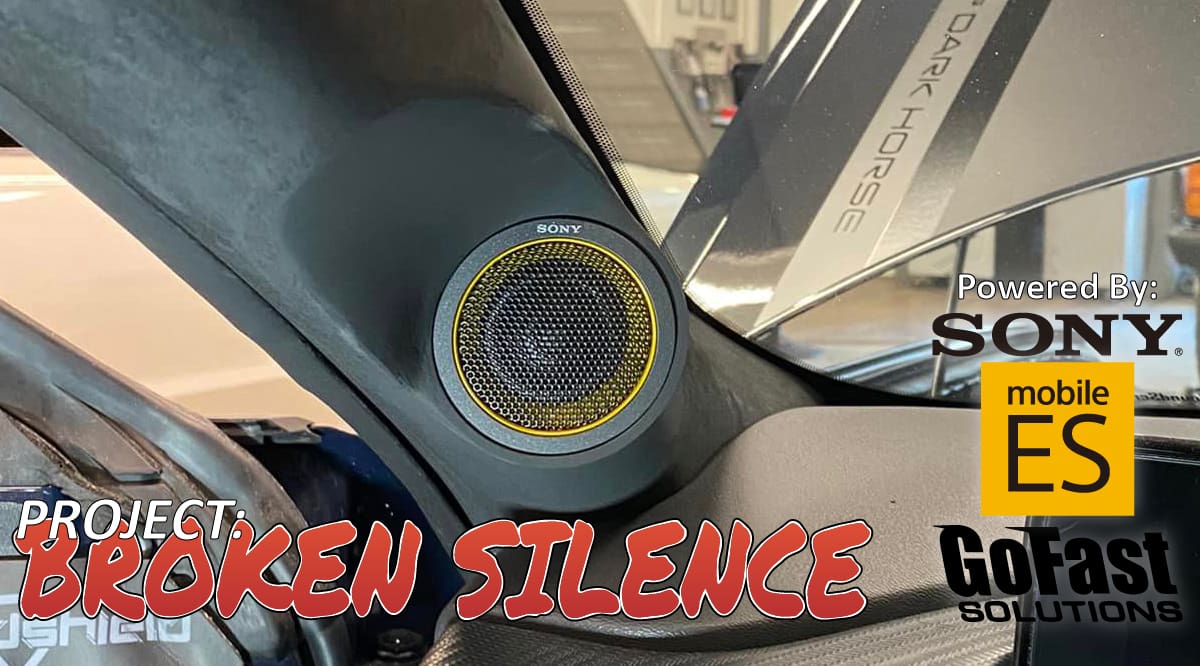Another week has passed, and both B.J. and Adan continue to progress on transforming this stunning Dark Horse Mustang into an amazing SEMA-worthy show car. This update will take us deeper behind the scenes of the tweeter integration into the A-pillars and look at the midrange mounting brackets. High-frequency driver placement is crucial to achieving a realistic listening experience, so getting it right matters. let’s see how the team handles the custom tweeter integration.
Midrange Speaker Installation
In the last article, we looked at the acrylic mounting rings Broken Silence created for the 6.5-inch woofer from the XS-163ES set. This week, we have a more complicated adapter for the 3.5-inch midrange drivers. These mounting adapters required three layers. First, B.J. drew the adapter’s base and cut a mounting plate out of 1/4-inch acrylic. From there, two spacer rings were added that include mounting tabs to hold the new speaker in place. Cyanoacrylate is used to bond the pieces together permanently. Finally, a good scuff and a coat of matte black paint ensure they aren’t visible through the speaker grill in the door.
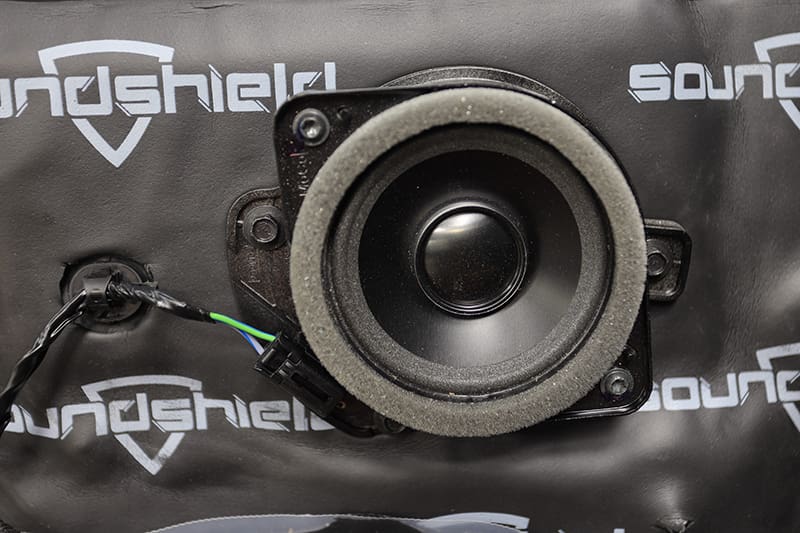
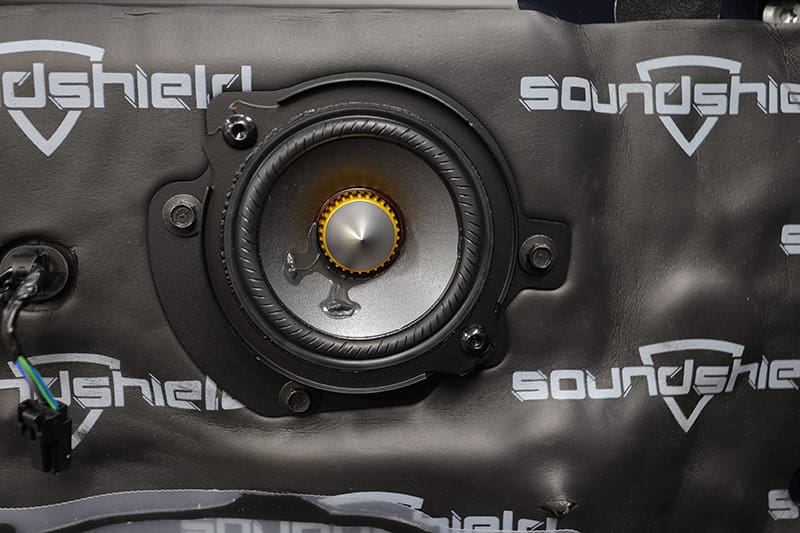
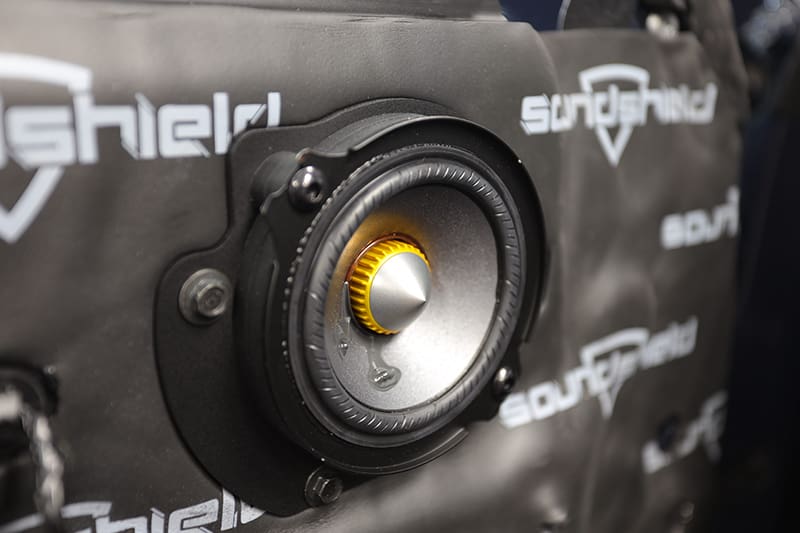
Ford Mustang Rear Speaker Installation
Depending on your listening preferences, rear speakers may or may not be an important part of your audio system design. The Sony team decided to upgrade the rear speakers on the parcel shelf of the Mustang. This leaves all the options open for system configuration and calibration. B.J. and Adan once again used laser-cut acrylic rings to allow the set of Sony Mobile ES XS-160ES coaxial speakers to fit directly into the original speaker locations.
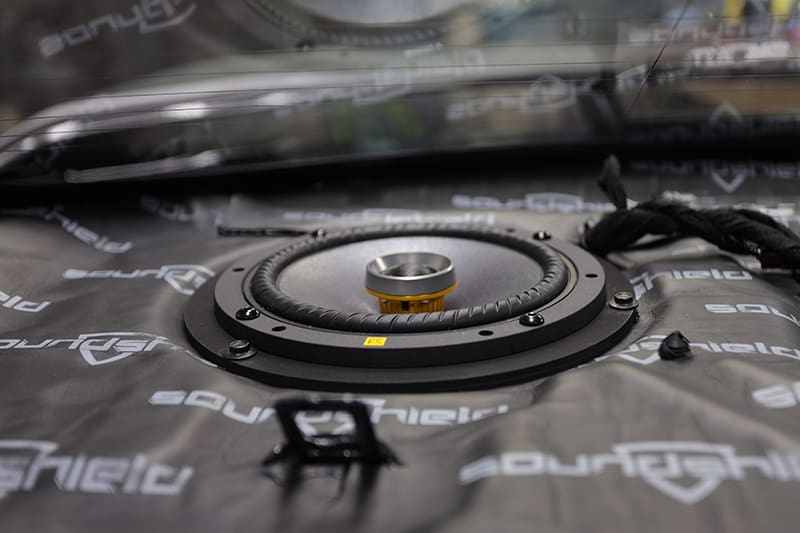
The Science of Speaker Directivity
Before we dive into the actual work, a bit of science: All speakers emit sound in a spherical pattern at low frequencies. The maximum frequency where this is true depends on the diameter of the speaker. For a 6.5-inch woofer, frequencies above 880 Hz become increasingly directional. We want to transition to a smaller driver below this frequency to ensure smooth frequency response throughout the vehicle. The 3.5-inch midrange in the XS-163ES set will handle this without any problem.
We don’t have another high-frequency driver that will play extremely high frequencies. As such, it is crucial to install tweeters in a way that allows them to direct their energy into the listening environment. B.J. and Adan decided an on-axis approach would be best for the Mustang.
Project Dark Horse Custom Tweeter Mounting
In the stock Mustang, the tweeters face across the car toward each other. This setup places the driver more on-axis with the passenger-side tweeter than the driver’s side. The same applies to the passenger, who aligns more with the driver-side tweeter. This design doesn’t create an ideal audio experience, as the highest frequencies aren’t evenly distributed from both sides.
To fix this, B.J. first removed the A-pillar trim panels and cut out the stock tweeter mount and grill. After carefully adjusting the position and direction, the team glued in the acrylic mounting rings we introduced last week. Then, using wooden tongue depressors, they built up the open space behind the tweeter. A clever trick with a special textile substrate added a contoured shape that seamlessly blends the tweeter mount’s recessed edge with the upper pillar.
With everything secured, the team filled the areas with automotive body filler, sanding them smooth to prep for primer, paint, and texture coating.
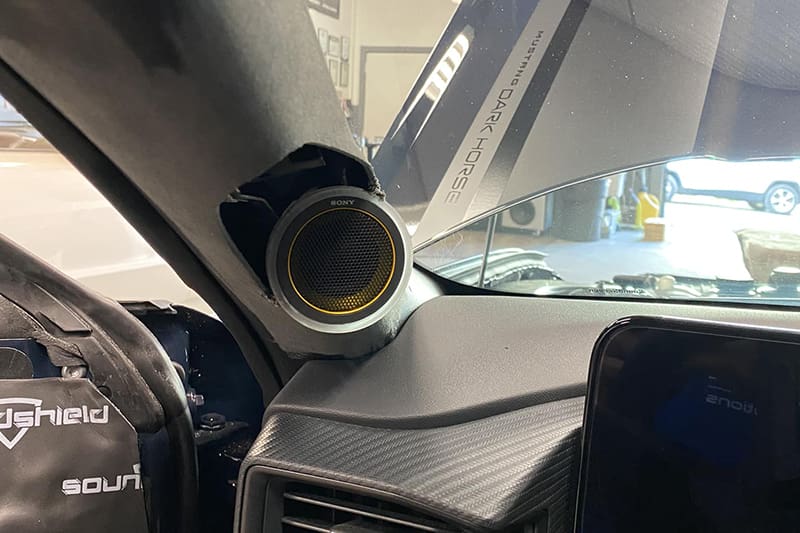
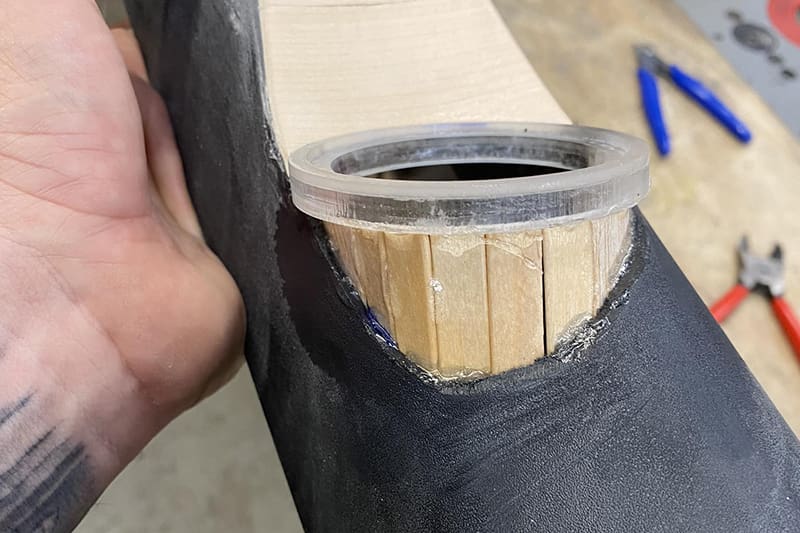
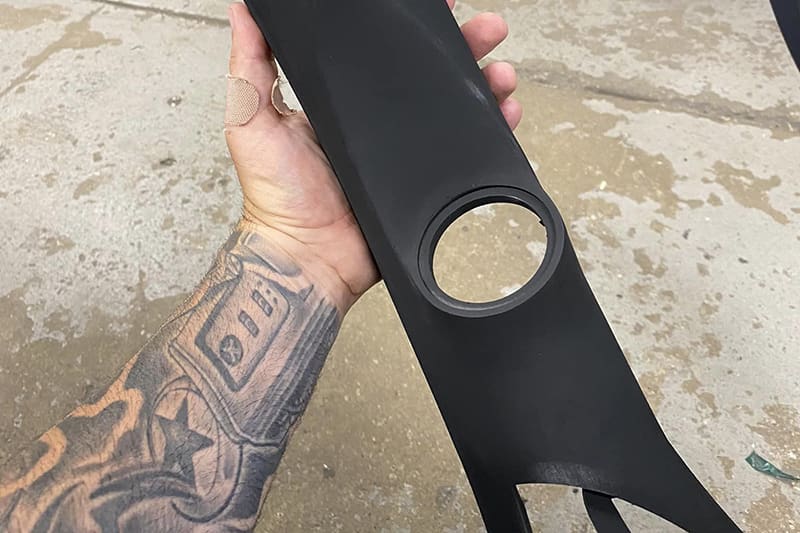
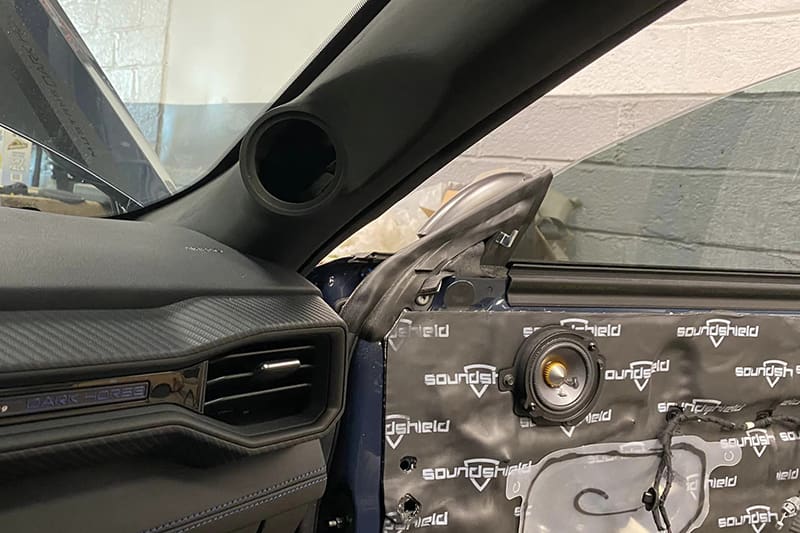
Project: Broken Silence Ford Mustang Dark Horse SEMA Build
The Broken Silence Custom Car Audio team has definitely been busy. They are steadily progressing toward finishing the Mustang in time for its debut, with SEMA 2024 on schedule. All that remains is wiring the amp rack, attending to the subwoofer enclosures, and creating trim for the trunk. Check back next week to see how they get on!
